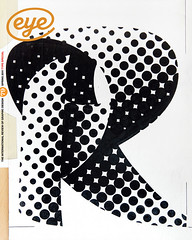Spring 2011
India meets US for a graphic King
I See the Promised Land
By Arthur Flowers and Manu Chitrakar; design by Guglielmo Rossi, Tara Books, £11.99Here is an oddity. A graphic novel about the American civil rights activist Martin Luther King, written by African-American writer, griot and blues singer Arthur Flowers; illustrated by Manu Chitrakar, a scroll-painter from Bengal, using the idiom of Patua art; and published by Tara Books, a worker-owned independent publisher based in Chennai, India.
As graphic biographies go, it is unapologetically straightforward. There have been several versions of MLK’s life in comics form, notably Ho Che Anderson’s King: A Comics Biography (reviewed in Eye 56), which went for the grimy ‘eyes on the prize’ angle, including King’s all-too-human frailties, his womanising and understandable fears about the threats to his life. But this account is a million miles from that, and all about King the god-on-earth, ‘touched by the hard hand of destiny’, and ‘filled with power’ the night he gives his ‘promised land speech’.
It is essentially a graphic eulogy for a man who ‘heard the calling’ and sacrificed his life in its pursuit.
Gandhi is here, of course. His effect on King’s policy of non-violence is duly recognised: ‘India, he walk round New Delhi in a Gandhi cap, following in the footsteps of his idol, his mentor in struggle’ [sic]. That policy is contrasted with the ‘eye for an eye violence’ of Malcolm X and the Panthers, and it is suggested that King assumed that ‘if it comes to armed battle the blacks will lose. Lose badly.’ This political commentary is interspersed with lively historical digressions – slavery, migration from the South, lynchings – sometimes related back to an Indian context: ‘Hard to explain to people what life was like in the apartheid South. Perhaps if you are an Untouchable of India ... Perhaps then you know.’
The illustrations are colourful and slightly weird, and while they point to classical scroll paintings as an antecedent to the modern comic, this does mean that they have everything to do with India and nothing to do with the US. The skin tones are a mixture of pinks, yellows, browns and blacks, which is making a political point, but which sometimes seems at odds with the tale being told. Similarly, the physiognomies and fashions are Asian, which is very distinctive but consistently jarring. If you can accept Rosa Parks as a sexy young Indian(-looking) woman wearing a white sari with her midriff showing, then this may be the book for you.
As an ‘adult graphic novel’, the volume raises other questions. The writing is not so much adult as school-age (a history lesson delivered in dialect), and this is a graphic novel only insofar as the images are captioned. The overall effect is like a poet rapping over a slide show. There is nothing wrong with any of this, just as there is nothing wrong with two artists from different continents having fun jamming. But then again, what’s the point?
First published in Eye no. 79 vol. 20 2011
Eye is the world’s most beautiful and collectable graphic design journal, published quarterly for professional designers, students and anyone interested in critical, informed writing about graphic design and visual culture. It is available from all good design bookshops and online at the Eye shop, where you can buy subscriptions and single issues.

